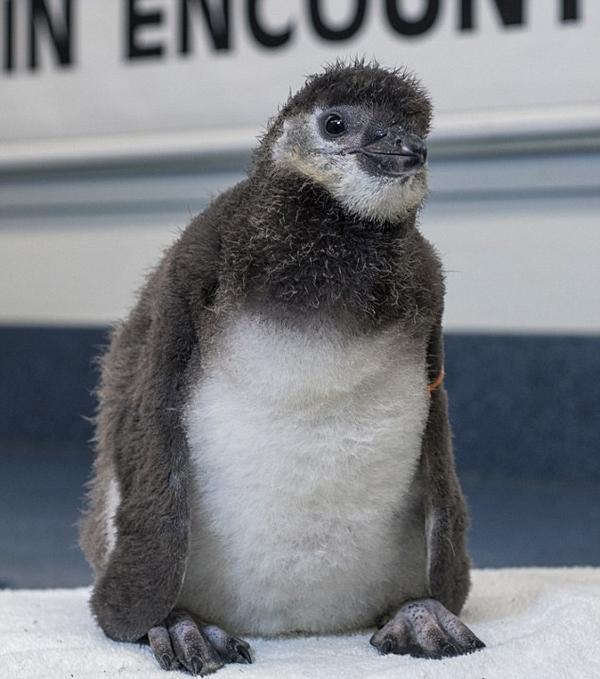First test-tube baby penguin says hello to the world - To science, she’s simply known as “184.” But on the empirical cuteness scale, the world’s first test-tube penguin scores a “100.”
The still unnamed baby Magellanic penguin was hatched at SeaWorld in San Diego 12 weeks ago, but the first images of her were released to the public this week.
She’s the first penguin to be born using artificial insemination, a technique researchers say will help them increase diversity in the captive penguin population and help their studies of the creatures.
The still unnamed baby Magellanic penguin was hatched at SeaWorld in San Diego 12 weeks ago, but the first images of her were released to the public this week.
She’s the first penguin to be born using artificial insemination, a technique researchers say will help them increase diversity in the captive penguin population and help their studies of the creatures.

Officials hope the first penguin hatched via artificial insemination at
SeaWorld in San Diego will help make strides in conservation efforts.
“The goal of our research center is to study a species’ reproductive biology, to learn as much as we can about that and use this to not only monitor the health of not only our zoological populations but wild populations as well,” said Sea World’s reproductive center Scientific Director Dr. Justine O’Brien.
The baby penguin is reportedly doing well. Twelve weeks after her birth, she is mingling with the natural-born penguin population and has transitioned from being hand-fed by a team of biologists to eating fish on her own.

Say hello to the world's first test-tube penguin http://dailym.ai/1vGNx6I
There are an estimated 1.8 million Magellanic penguins living in the wild. The species is typically found in South America around the Falkland Islands, Chile and Argentina. The species is considered “near threatened,” as its numbers have been affected by oil spills, diminished fish populations and climate change. O’Brien says the successful breeding of 184 is not only helpful for research purposes but could help scientists in future efforts to increase the wildlife stock of penguins and other species.
Penguin 184 has a special place in history. Hundreds of baby penguins have hatched at the Sea World facility, but they were all natural births. Sea World says that it successfully completed the first artificial insemination of an animal in captivity in 2000 but that this was the first time the technique had worked on a penguin. O’Brien tells NBC San Diego that she and her team went back and forth between trying the process with frozen and thawed sperm sampled before finally managing to succeed with a test run in May.
However, O’Brien says that 184 mixes in perfectly with her four adult penguin companions.
“You could not tell if she was from frozen-thawed or fresh, chilled semen or even from natural breeding,” said O’Brien. “She’s happy and healthy, and that’s what we want to see.” ( The Sideshow )
No comments:
Post a Comment